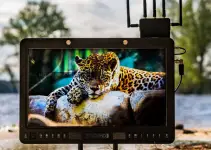Directing for the unscripted format is a delicate balance of maintaining an unbiased perspective and presenting an intriguing and engaging story. While creative editing or leading questions can help you achieve the story you want to tell, you cost yourself credibility in the process.
Director and editor Michael Rabiger’s book Directing the Documentary aims to educate documentary filmmakers on successful methods of this careful production process. Through his career, Rabiger has worked on over 35 films as director or editor. He also founded the Documentary Center at Colombia College in Chicago, acting as an ambassador of the industry. In this article, we’ll take a look at some of the finer points he covers regarding directing people.
The first main point he makes is that maintaining a level of comfort with your subject will lead to a more honest and candid interview than you would be likely to achieve by engaging your subject in a situation that’s foreign to them. Being able to connect with them on a familiar level before formally beginning the interview, as well as conducting it in a location they know and find comfort in, such as their home or office.
New and strange scenarios are often subconsciously approached with caution, which can be a content-killer if your subject is not familiar with being mic’d up under some KINO’s with a camera four feet away. If a studio is necessary, building a rapport with your interview subject before getting to location will aid in making yourself the familiar factor, and in turn giving you an advantage once the cameras begin to roll.
Another point properly examined was that the self-consciousness and self-image of your interview subjects is a factor to constantly consider. This covers not only their visual representation, but also how their personality and opinions are perceived on film. Adults tend to have the strongest worries of representation, while children and the elderly don’t fall victim to that same level of ego.
Many children will answer honestly without a fear that their shirt is stained or their hair is out of place, largely because they have yet to reach a point in life where personal image is perceived as crucial. In respect to the elderly, with advanced age comes the beautiful recognition that many of those small concerns truly amount to nothing of note.
Beyond the cosmetic, a candid interview can bare fruits of a controversial and damning nature. While this material may be incredibly tempting to put into use, it is imperative to receive informed consent from your subject prior to representing them in any light aside from what they’ve agreed to. Another important aspect that comes from journalism is the responsibility to maintain trust with your subject by not using material that is potentially damaging to the subject. This is less about censorship, and more about keeping the trust of individuals brave enough to speak freely on camera.
Lastly and possibly most-importantly, do not make the mistake of asking your subject to “be” anything. Do not ask them to “be honest”, or “be yourself”, because then you leave them open to internal scrutiny as to whether or not they’re answering or acting in a way that appeases you. Take time instead to simply engage them in a way that makes them comfortable.
You can read more from Rabiger’s book from the excerpt on directing people for documentary here:
Disclaimer: As an Amazon Associate partner and participant in B&H and Adorama Affiliate programmes, we earn a small comission from each purchase made through the affiliate links listed above at no additional cost to you.
Claim your copy of DAVINCI RESOLVE - SIMPLIFIED COURSE with 50% off! Get Instant Access!





